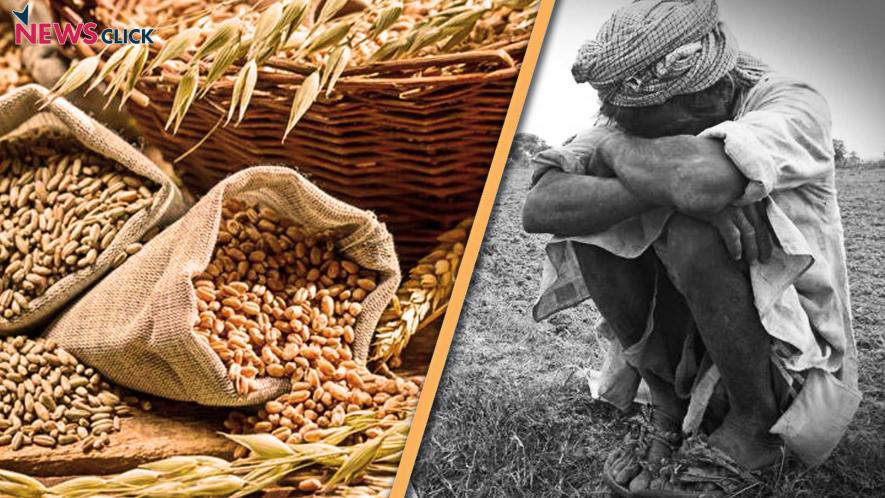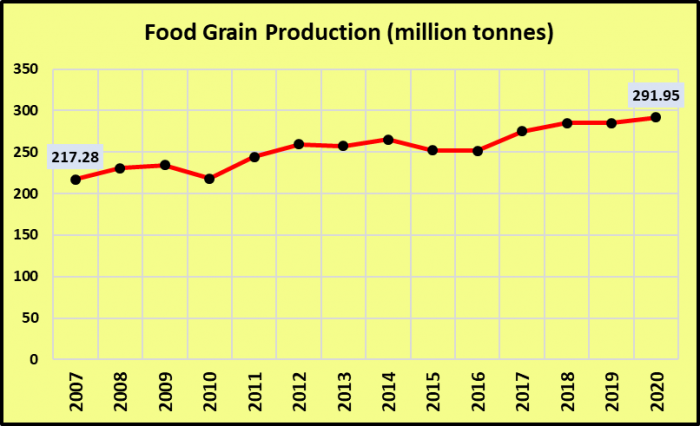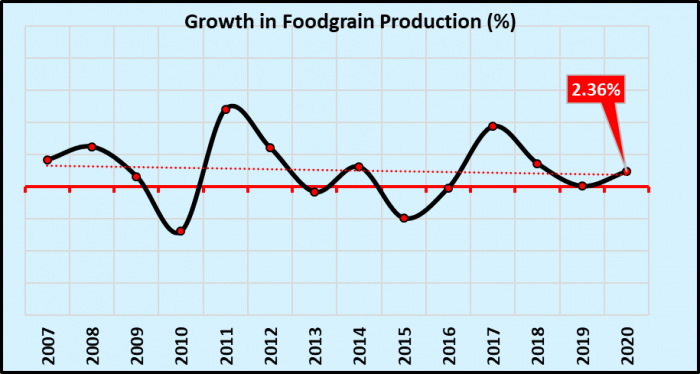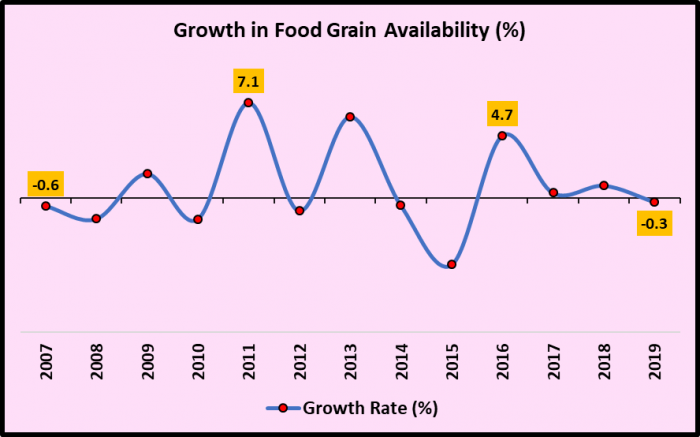Record Food Grain Production, Yet People Are Not Getting More

According to released recently second advance estimates, total output of cereals and pulses in India will be 291.95 million tonnes in 2019-20, which will be an all time record, beating the earlier high of 285.21 million tonnes set in the preceding year. This includes a record output of wheat at 106.21 million tonnes and also, a high of rice at 117.41 million tonnes. These estimates are likely to change only marginally in the coming days before the production data is finalised.

Sounds good? It does, but there are several worries that do not become visible straight away.
Have a look at the chart below which shows how food grain production has been actually growing every year, that is, yearly growth rate. This is calculated from official output data. It shows that there are sudden dips in production growth, caused by bad monsoons) and this leads to peaks after that as output recovers. But, overall, the growth rate is hovering between 2-3% or thereabouts, if one ignores the peaks and troughs. This is indicated in the trend line in red dots.

In fact, in the above chart, there is a clear sign of steady decline in growth rate. It’s almost stagnating. This means that the “record” outputs being reported are just marginal increases, and not so great jumps.
To understand why this is important, and worrisome for the country, it is necessary to look at how much food grain is actually available for consumption by this country’s people. Out of the total production, one part is kept aside by farmers for seeds, some part may be lost or wasted in processing and transportation, and some part is exported. All these are estimated by the government and subtracted from the total production. There is also a small amount that is imported, perhaps by companies who make consumer items like biscuits or other eatables. That much has to be added. Thus, the net availability for people is calculated.
In 1951, a few years after Independence, net availability of food grain was just 52.4 million tonnes. It tripled to 158.6 million tonnes in 40 years - by 1991. In 2019, net availability was 285.21 million tonnes. Meanwhile, population has been growing, although this growth has slowed down considerably in the past few decades. To estimate the effect of population growth on food grain availability, all that is required is to find out the net availability per person.
In 2006, the net availability of food grain per person was just 445.3 grams per day. In 2019, this had increased to 491.9 g/day. The chart below shows how this availability per person has grown since 2007.

It is clear that in bad monsoon years, people get to eat less, and they get more in good monsoon years. That in itself, shows the precarious condition of people. It also shows the shameful reality that people in India, in the 21st century, are dependent on the rains for filling their stomachs – just as they used to be 5000 years ago.
Another aspect visible in the graph is that the growth rate is nothing notable or worth celebrating. One may exult at record food grain harvests, but the per person availability is still not growing dramatically, hovering around the 1% increase or decrease level, barring the sudden ups and downs of monsoon effects.
So, if per person availability is nothing worth noting, what is the great triumphalism about record harvests? In the Modi years (since 2014) there has been a very minor rise in the availability. This is despite all the great schemes being run since before. It is small wonder then that the country hosts some 200 million people who suffer from malnutrition, and that over a third of children are under weight or suffer other deficits. In the rush to make India great again, and build a $5 trillion economy, Modi and his government seem to have buried their heads in sand on this key crisis.
Get the latest reports & analysis with people's perspective on Protests, movements & deep analytical videos, discussions of the current affairs in your Telegram app. Subscribe to NewsClick's Telegram channel & get Real-Time updates on stories, as they get published on our website.






















